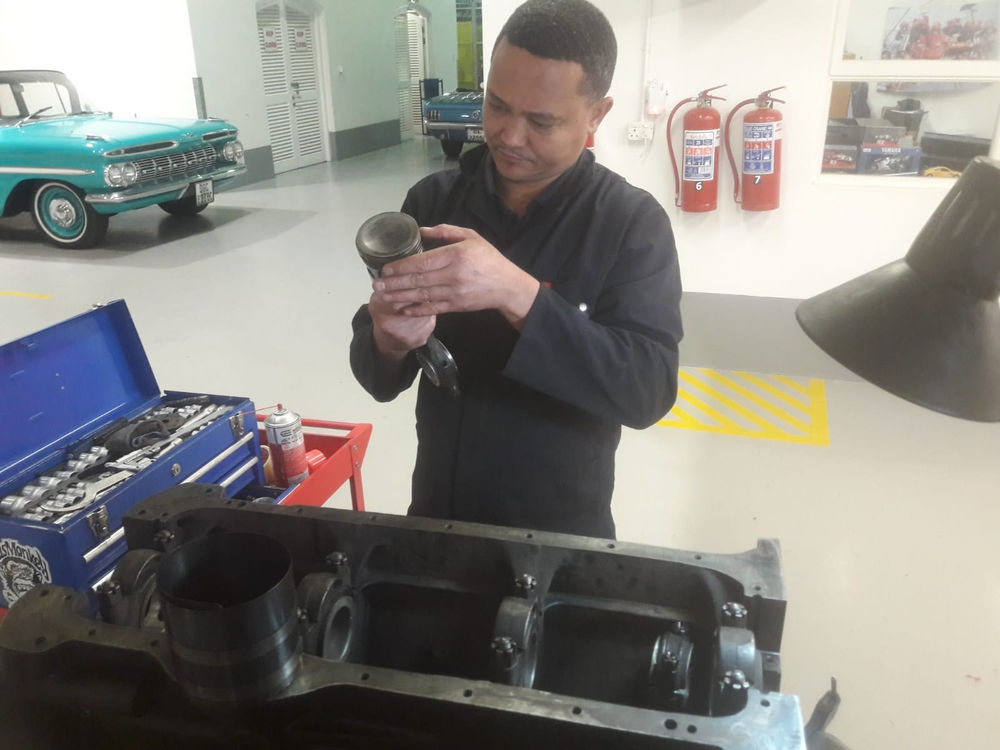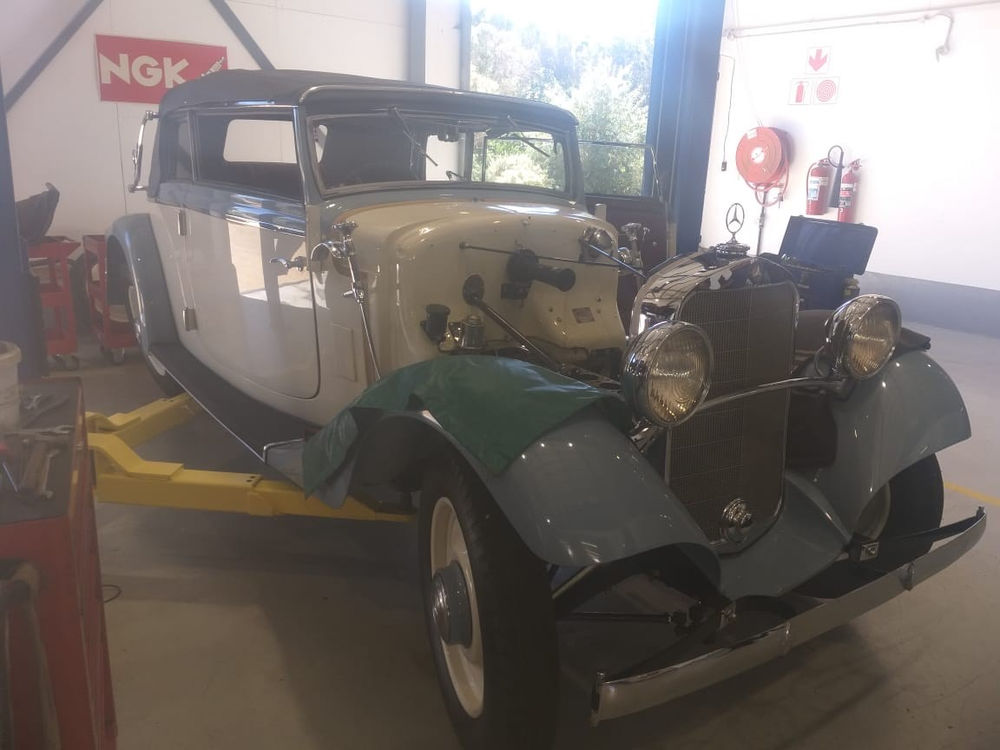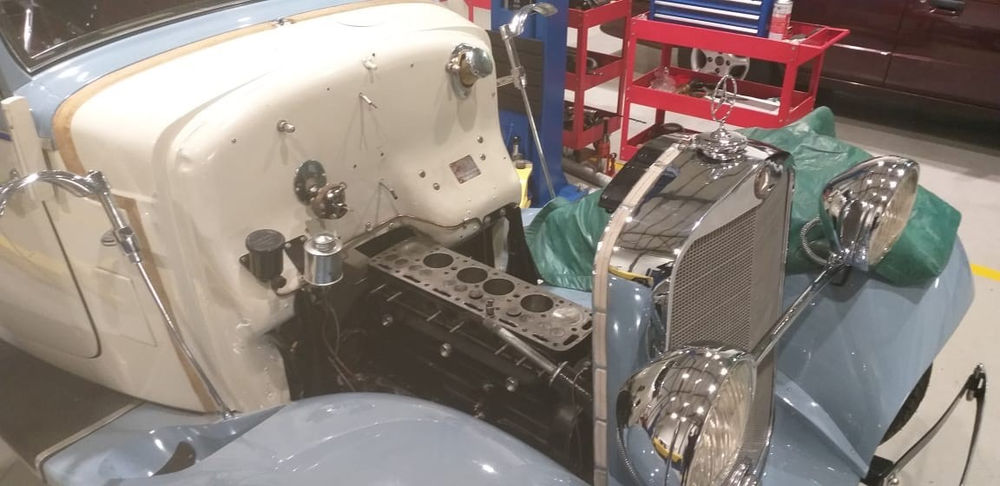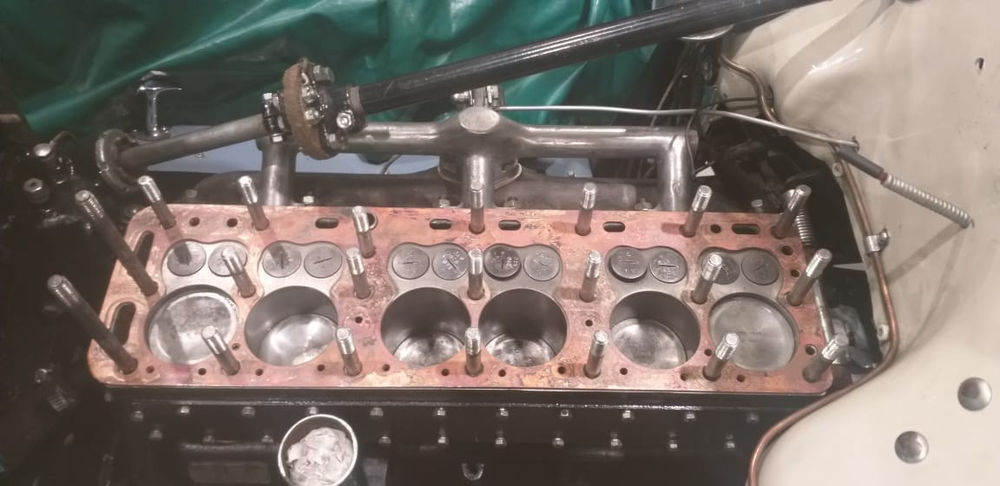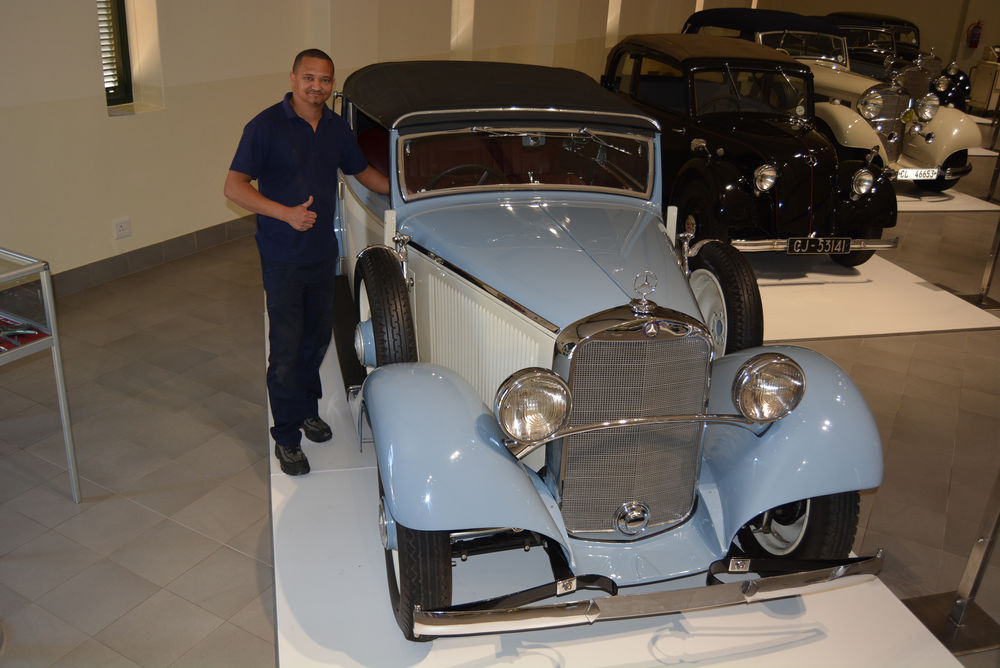
30 Nov Spanner Works: Donny Tarentaal
A new, regular feature outlining the activities of FMM’s workshop personnel who are responsible for repairing, renovating, refurbishing and restoring the museum’s large collection of vehicles. This month we feature Donny Tarentaal and how he brought a three-pointed star back to its former glory….
The W21 Mercedes-Benz, launched in 1933, was available in a variety of two- and four-door body styles. In the Museum’s portfolio is an elegant 1934 200B Cabriolet variant. The car was in storage for a few years in its original condition. But such a beautiful classic had to be given the royal treatment in order to truly shine, so a full cosmetic restoration with a local specialist company was undertaken. The W21 returned looking pristine and with the original engine left untouched, ticking over slowly, but surely.
With the car now looking the business, it was also being displayed more often. This meant it was also being driven more often, since FMM’s aim is to have all the vehicles on display to be driveable. But with no known history of the engine, it was expected that some issues would arise on an 86-year-old car.
Donny takes up the story. “When checking the oil one day, I found that water and oil had mixed into the sort of mayonnaise-looking liquid that all mechanics dread. After some further inspection, it was decided that the cylinder head would have to be removed, after which it was sent to an engineering specialist, while a new gasket was made up to match the head. With all the fresh parts in hand, I set about reassembling the cylinder head. Following the correct torque value and sequence, the head was tightened onto the block with the new gasket. However, for some reason there was still a leak because the oil and water was still mixing together.
“So, with much thought and consultation, it was decided that the engine block would have to be checked and possibly skimmed as well. This meant that the entire engine had to come out and be disassembled for a rebuild. And for the engine to be removed, first the gearbox had to be removed. And thus, my first full engine teardown ensued…
“With the engine in pieces, the head and block were sent back to the engineering works to be matched at their joining surfaces. A fresh copper gasket, new head studs and new nuts and bolts for one of the connecting rods were also manufactured. In May 2019, I began reassembly of the engine but, unfortunately, I wasn’t able to replace the big-end bearings as they were cast onto each connecting rod and thus not a loose item. Even if they were, there may have been spares availability issues, but they seemed okay and were reused as is.
“Once the engine was back in one piece, it was time to refit it to the vehicle. This always involves team work with one operating the crane, one guiding and others looking for possible clearance issues. The gearbox was also refitted and all the liquids were filled to ready the W21 for its first start after the rebuild. On 2 July 2019, the car started and idled and was able to be warmed up for a proper adjustment of the valve clearances. I first tried a general setting of a later-model six-cylinder engine, but after getting some tips from a local Mercedes-Benz guru, I was able to adjust them to be much smoother and quieter in operation.
“This being my first major engine rebuild, I’m very happy to have gained the experience. It has given me the confidence to tackle many more big projects in the future.”
Visitor note: The Mercedes-Benz W21 is currently on display in Hall B.
